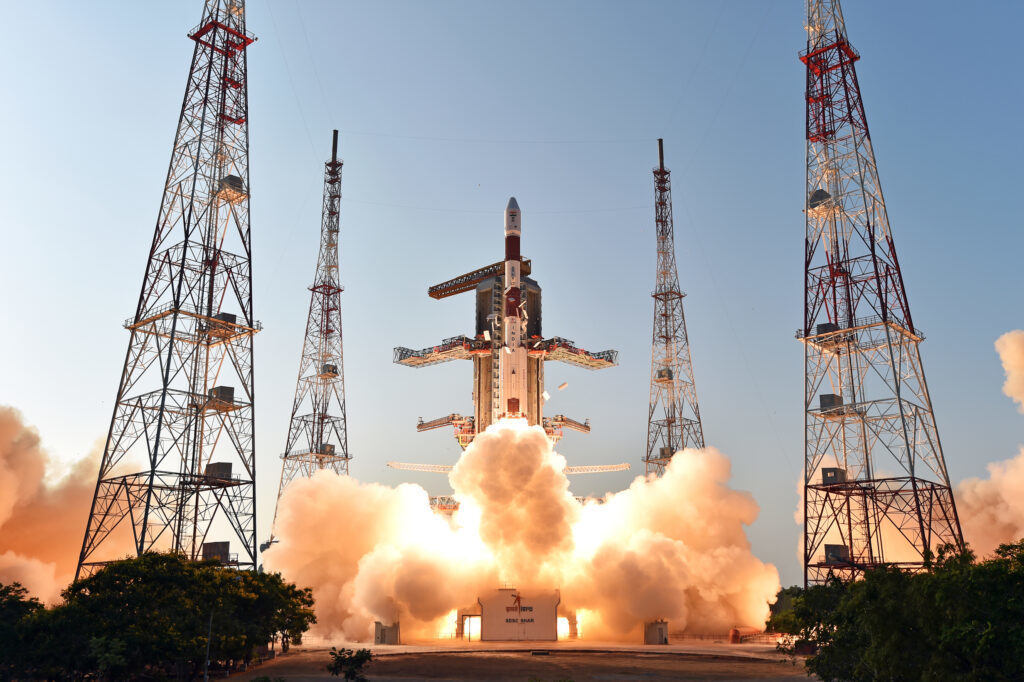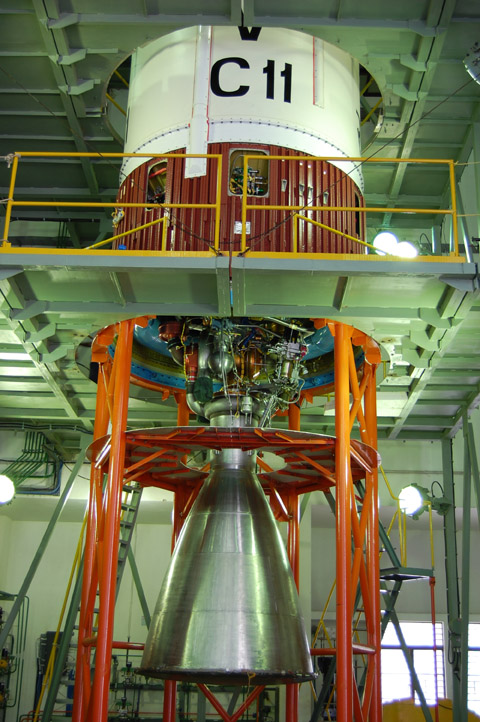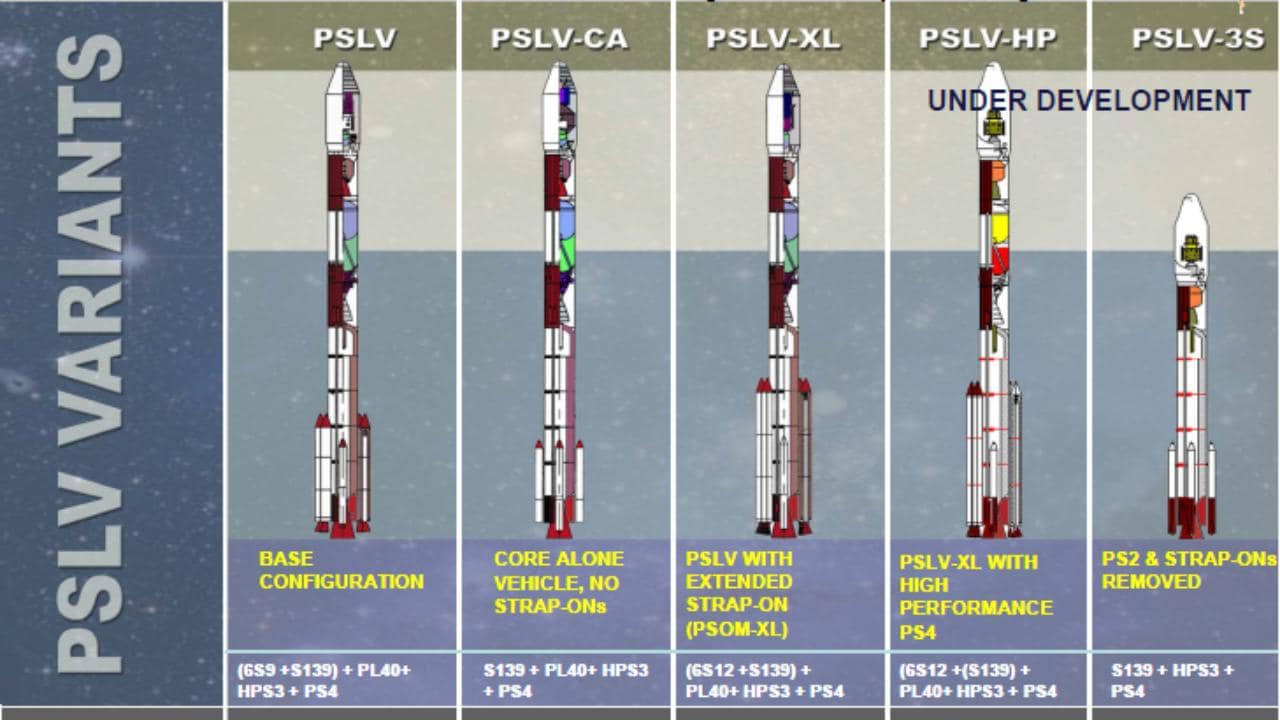PSLV – Polar Satellite Launch Vehicle

About the Launch Vehicle
Polar Satellite Launch Vehicle (PSLV) is the 3rd generation launch vehicle of India. It is the first Indian launch vehicle to be equipped with liquid stages.
After its first successful launch in October 1994, PSLV emerged as the reliable and versatile workhorse launch vehicle of India with 50 successful missions as of August 2020.
The vehicle has launched 48 Indian satellites and 319 foreign satellites from 33 countries as of December 2019.
Polar Satellite Launch Vehicle has gained credence as a leading provider of ride-share services for small satellites, due its numerous multi-satellite deployment campaigns with auxiliary payloads usually ride sharing along an Indian primary payload.

Most notable among these was the launch of PSLV C37 on 15 February 2017, successfully deploying 104 satellites in sun-synchronous orbit, tripling the previous record held by Russia for the highest number of satellites sent to space on a single launch.
Besides, the vehicle successfully launched India’s first lunar probe Chandrayaan-1 in 2008 and Mars Orbiter Spacecraft (Mangalyaan) in 2013 that later traveled to Moon and Mars respectively, and India’s first space observatory, Astrosat.
When was PSLV development started?
Studies to develop a vehicle capable of delivering 600 kg payload to 550 km Sun-synchronous orbit from SHAR began in 1978.
Among 35 proposed configurations, four were picked and by November 1980, a vehicle configuration with two strap-ons on a core booster (S80) with 80 tonne solid propellant loading each, a liquid stage with 30 tonne propellant load (L30) and an upper stage called Perigee-Apogee System (PAS) was being considered.
By 1981, confidence grew in remote sensing spacecraft development with launch of Bhaskara-1 and the Polar Satellite Launch Vehicle project objectives were upgraded to have vehicle deliver 1000 kg payload in 900 km SSO.
As technology transfer of Viking rocket engine firmed up, a new lighter configuration shifting away from relying on three large solid boosters was proposed by team led by APJ Abdul Kalam and eventually selected.
Funding was approved in July 1982 for finalized design employing a single large S125 solid core as first stage with six 9 tonne strap-ons (S9) derived from SLV-3 first stage, liquid fueled second stage (L33) and two solid upper stages S7 and S2.
This configuration needed further improvement to meet the orbital injection accuracy requirements of IRS satellites and hence solid terminal stage (S2) was replaced with a pressure fed liquid fueled stage (L1.8 or LUS) powered by twin engines derived from roll control engines of first stage.
Apart from increasing precision, liquid upper stage also absorbed any deviation in performance of solid third stage. Final configuration of PSLV D1 to fly in 1993 was (6 × S9 + S125) + L37.5 + S7 + L2.
The inertial navigation systems are developed by ISRO Inertial Systems Unit (IISU) at Thiruvananthapuram.
The liquid propulsion stages for the second and fourth stages of PSLV as well as the Reaction control systems (RCS) are developed by the Liquid Propulsion Systems Centre (LPSC) at Mahendragiri near Tirunelveli, Tamil Nadu.
The solid propellant motors are processed at Satish Dhawan Space Centre (SHAR) at Sriharikota, Andhra Pradesh which also carries out launch operations.
The Polar Satellite Launch Vehicle was first launched on 20 September 1993. The first and second stages performed as expected, but an attitude control problem led to the collision of the second and third stages at separation, and the payload failed to reach orbit.
After this initial setback, the Polar Satellite Launch Vehicle successfully completed its second mission in 1994. The fourth launch of PSLV suffered a partial failure in 1997, leaving its payload in a lower than planned orbit.
By Nov 2014 the PSLV had launched 34 times with no further failures. (Although launch 41: August 2017 PSLV-C39 was unsuccessful.)
Polar Satellite Launch Vehicle continues to support Indian and foreign satellite launches especially for low Earth orbit (LEO) satellites.
It has undergone several improvements with each subsequent version, especially those involving thrust, efficiency as well as weight.
In November 2013, it was used to launch the Mars Orbiter Mission, India’s first interplanetary probe.
ISRO is planning to privatise the operations of Polar Satellite Launch Vehicle and will work through a joint venture with private industries. The integration and launch will be managed an industrial consortium through Antrix Corporation.
Vehicle Description
The PSLV has four stages using solid and liquid propulsion systems alternately. The first and third stages are incorporated with two solid propulsion systems, with the second and fourth stages powered by liquid engines.
- First stage (PS1)
- Second stage (PS2)
- Third stage (PS3)
- Fourth stage (PS4)
First stage(PS1)

PSLV uses the S139 solid rocket motor that is augmented by 6 solid strap-on boosters.
| Length | 20 m |
| Diameter | 2.8 m |
| Engine | S139 |
| Fuel | HTPB |
| Max. Thrust | 4800 kN |
| Burn time | 110 seconds |
| Propellant mass | 138,200 kg |
Second stage(PS2)

PSLV uses an Earth storable liquid rocket engine for its second stage, know as the Vikas engine, developed by Liquid Propulsion Systems Centre.
| Length | 12.8 m |
| Diameter | 2.8 m |
| Engine | Vikas |
| Fuel | UDMH + N2O4 |
| Max. Thrust | 799 kN |
| Burn time | 133 seconds |
| Propellant mass | 42,000 kg |
Third stage(PS3)

The third stage of Polar Satellite Launch Vehicle is a solid rocket motor that provides the upper stages high thrust after the atmospheric phase of the launch.
| Length | 3.6 m |
| Diameter | 2 m |
| Fuel | HTPB |
| Max. Thrust | 240 kN |
| Burn time | 83 seconds |
| Propellant mass | 7,600 kg |
Fourth stage(PS4)
The PS4 is the uppermost stage of PSLV, comprising of two Earth storable liquid engines.
| Length | 3 m |
| Diameter | 1.3 m |
| Engine | 2 x PS-4 |
| Fuel | MMH + MON |
| Max. Thrust | 7.6 x 2 kN |
| Burn time | 425 seconds |
| Propellant mass | 2,500 kg |
Boosters
PSLV-G(S9)
| No. of boosters | 6 |
| Max. Thrust | 510 kN |
| Burn time | 44 seconds |
| Fuel | HTPB |
PSLV-XL/QL/DL(S12)
| No. of boosters | 6(XL) 4(QL) 2(DL) |
| Length | 12 m |
| Diameter | 1 m |
| Propellant mass | 12,200 kg |
| Max. Thrust | 704 kN |
| Total thrust | 4,221 kN(XL) 2,814 kN(QL) 1,407 kN(DL) |
| Burn time | 70 seconds |
| Fuel | HTPB |
Payload Capacity
| Low Earth Orbit(LEO) | 3,800 kg |
| Sun Synchronous Orbit(SSO) | 1,750 kg |
| Sub-Geostationary Transfer Orbit(Sub-GTO) | 1,425 kg |
| Geostationary Transfer Orbit(GTO) | 1,200 kg |
Launch History
| Total launches | 50 |
| Successful | 47 |
| Failures | 2 |
| Partial failures | 1 |
Variants
ISRO has envisaged a number of variants of Polar Satellite Launch Vehicle to cater to different mission requirements. There are currently two operational versions of the Polar Satellite Launch Vehicle the core-alone (PSLV-CA) without strap-on motors, and the (PSLV-XL) version, with six extended length (XL) strap-on motors carrying 12 tonnes of HTPB based propellant each. These configurations provide wide variations in payload capabilities up to 3,800 kg in LEO and 1,800 kg in sun-synchronous orbit.

- PSLV-G (retired)
- PSLV-CA
- PSLV-XL
- PSLV-DL
- PSLV-QL
- PSLV-3S (Concept)
You can read more about the upcoming launches here.
Additional Resources:
